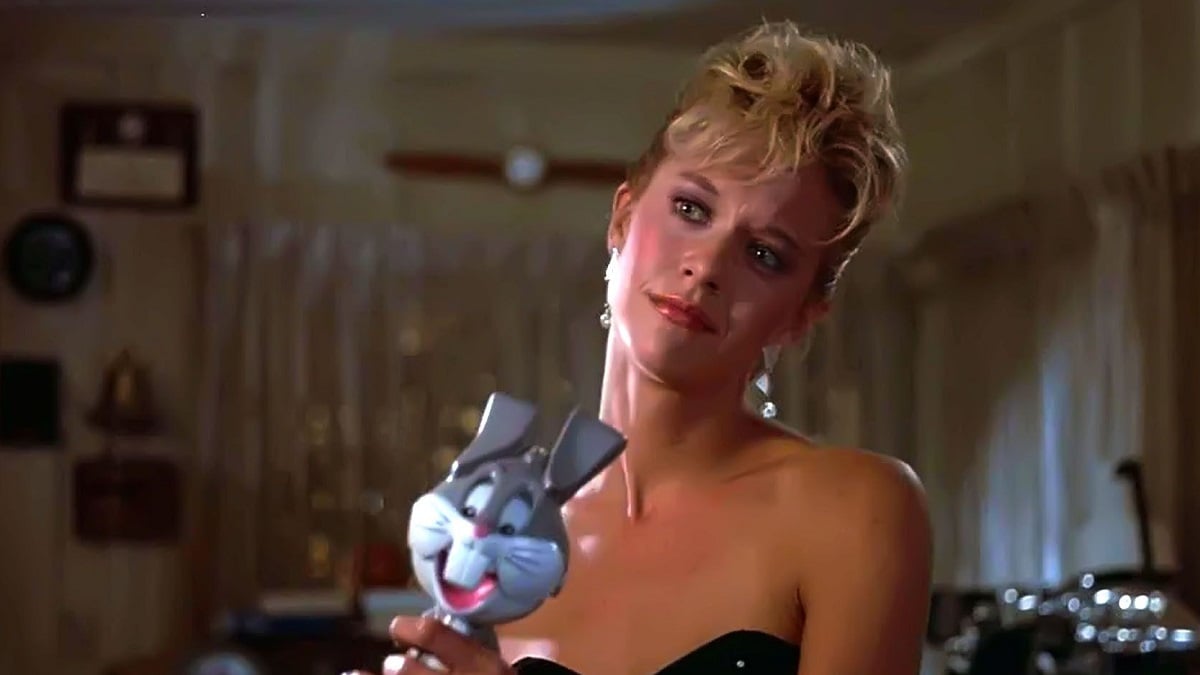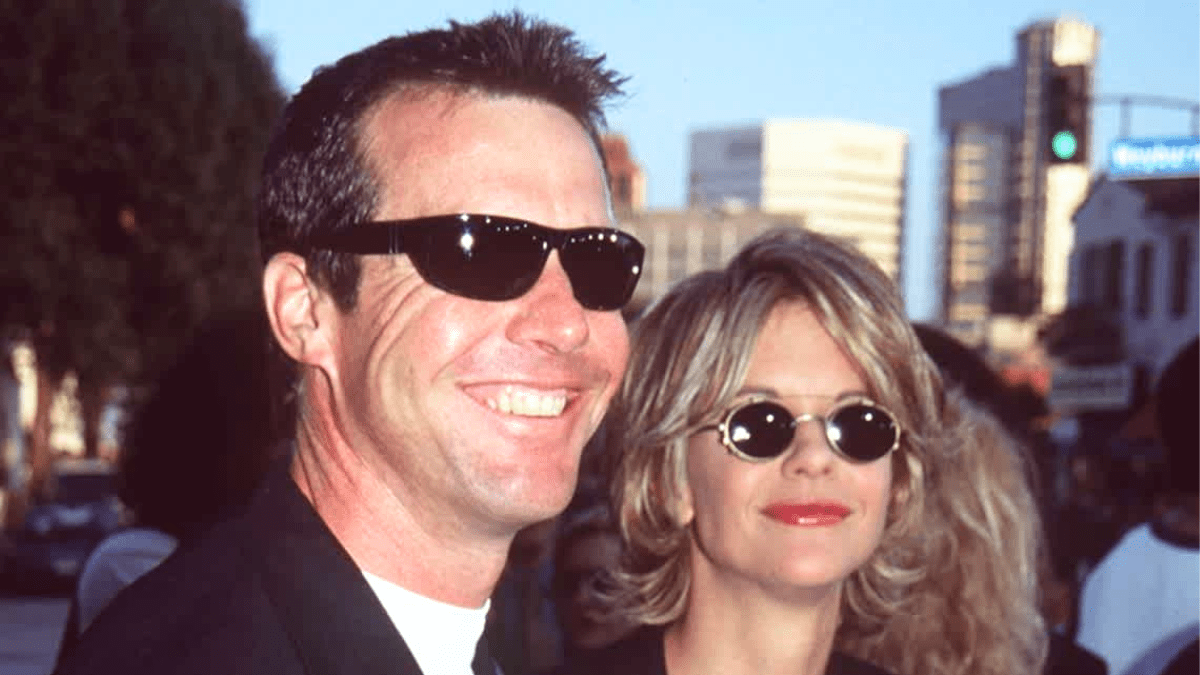With the recent release of the trailer for her upcoming film What Happens Later, Meg Ryan is back in the spotlight. Her breakthrough role in When Harry Met Sally… (1989) bagged her a Golden Globe nomination and propelled her into the big time, with starring roles opposite Tom Hanks in Joe Versus The Volcano (1990) and the iconic Sleepless In Seattle (1993) that cemented her status as a leading lady. But this run of success was preceded by a long apprenticeship in TV and film. Prior to stardom, Ryan is best remembered as Carole, the wife of hotshot pilot “Goose” Bradshaw in Tony Scott’s Top Gun (1986). But the following year, she appeared in a hugely enjoyable, Academy Award-winning comedy that, despite an impressive cast, fine visuals, and clever plot, is all but forgotten today. Here’s why Innerspace is the best Meg Ryan film you’ve never seen.
Fantastic Voyage with an 80s twist
Directed by Joe Dante, the sci-fi action comedy takes the premise behind the 1966 Raquel Welch vehicle Fantastic Voyage and updates it for the 80s. Tuck Pendleton (Dennis Quaid), a drunk fighter pilot, volunteers for a top-secret mission: He is to be miniaturized in a submersible pod and injected into a laboratory rabbit to prove the validity of the technology. Unable to reach the laboratory workers on radio, however, he is oblivious as the lab is attacked by gunmen employed by a rival company, eager to get their hands on the new tech. In a desperate attempt to save him, a lab technician pockets the syringe containing Tuck, escapes, and injects him into the first person he can find—Jack Putter (Martin Short), a supermarket worker who just happens to be a hypochondriac. Merriment ensues, as Putter starts to panic when Pendleton journeys into his inner ear and Putter begins hearing a voice “inside his head”.
Ryan as go-getting journalist

Realizing that Putter is hardly equipped for the task of getting him back to the lab, Tuck instructs him to find Lydia (Ryan), Tuck’s ex-girlfriend and a go-getting newspaper reporter. Ryan is instantly believable in the role, with her enchanting chalk-and-cheese double act with Short and sharp banter with her newspaper editor. The centerpiece of the film’s second act is an impressive action sequence that includes Short clinging on to the flapping back door of a truck traveling at speed along a California highway, with Ryan bringing up the rear in a sports car and Quaid watching the goings-on through Short’s eyeball yet powerless to do anything about it.
More shenanigans ensue, including Jack trying to retrieve a microchip crucial to the miniaturization process by impersonating a sleazy figure called the Cowboy (played with dash by Robert Picardo almost a decade before he found fame in Star Trek: Voyager). Fresh from success opposite Steve Martin and Chevy Chase in Three Amigos! (1986), Short nails the performance, and the emotional fulcrum of the film is Jack’s gradual transformation from timid grocery clerk to an assertive, adventuresome individual.
A romance redeemed
But it’s Quaid and Ryan who steal the show. Having established that the couple have broken up early in the first act, Quaid briefly gets transferred into Lydia, and discovers that she is pregnant with his child. Lydia hurries Jack back to the lab as Tuck’s oxygen supply runs low, and he discovers he is not alone—one of the rival company’s henchmen has entered Jack’s body in his own pod, and the two duke it out in Jack’s gullet in a visually impressive action sequence. A happy ending including a the-nick-of-time rescue of Tuck, a marriage for him and Lydia, and Jack driving off into a Big Sur sunset seals Innerspace’s credentials as a goofball, feel-good comedy. Despite the excellent direction, special effects that are as impressive today as they were then, and Steven Spielberg’s name attached to the project as executive producer, a mishandled publicity campaign resulted in a modest box office performance for the film.
Innerspace is not perfect: some of the plot points are too outlandish even for a goofball comedy, and its gender politics have not aged well. (Ryan’s character spends much of the film getting hit on by various male characters.) It is also true that Ryan would find far more substantial roles coming her way in the years thereafter. But, as reviewers recognized at the time, the film’s pluses far outweigh the minuses. Ryan’s chemistry with Quaid, though only fleetingly shown, shines through (the pair would get married only a few years later), and there is much fun to be had in watching Ryan, Quaid, and Short face up to Kevin McCarthy’s villainous, ever so slightly screwy corporate type. Contrived and farfetched it may be, but Ryan has seldom been in a movie so brimming with fun-filled action.

